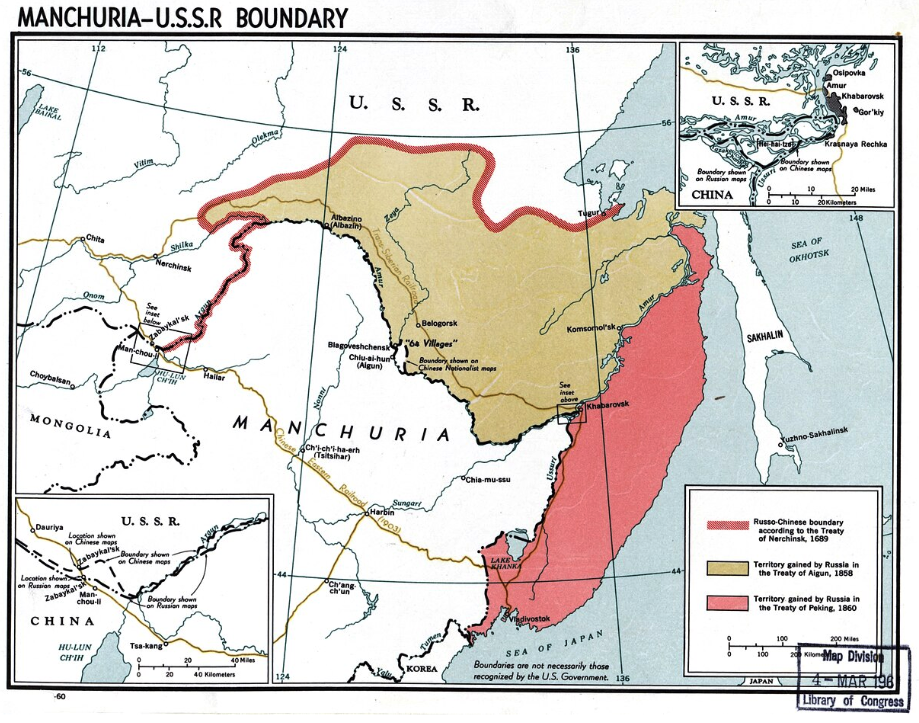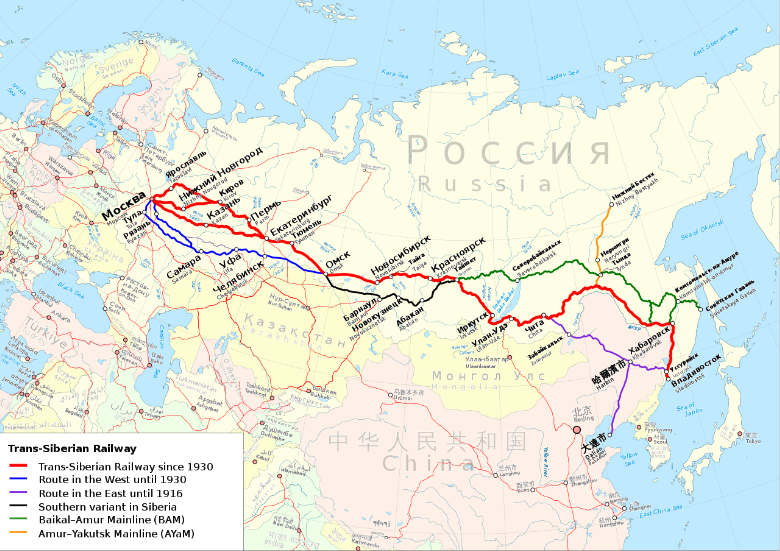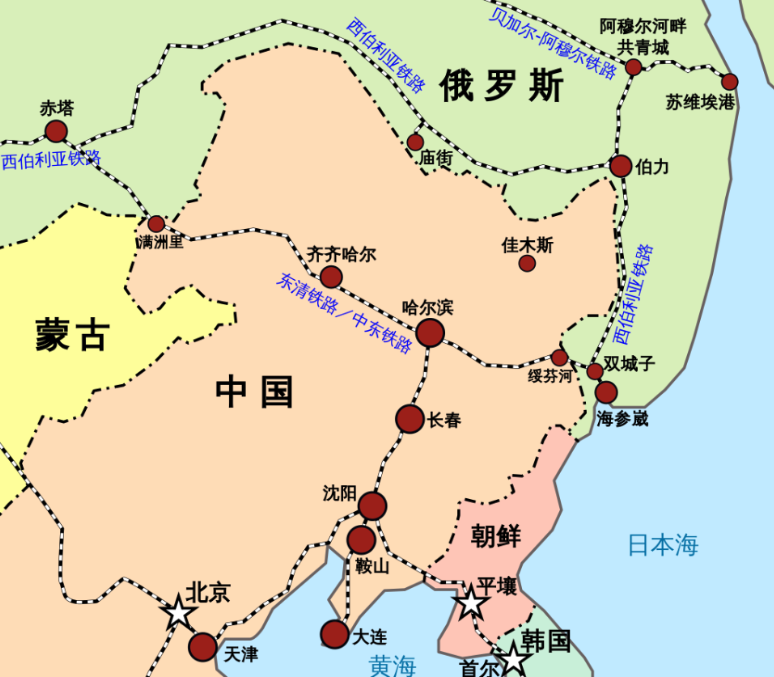Japan Expansion
In this post, I’m trying to provide a record of Japan’s expansion events during 1850 to 1945 in East Asia, mainly Korea and China. To fully understand those historic events and linkage, however, we will need to bring in another expansionist power and rival of Japan - Russia.
Japan’s expansion in Korea
Japan’s first invasion of Korea dated back as early as 1592, when Korea was Tributary state of Ming China. The invasion was led by Toyotomi Hideyoshi and ended in 1598 after his death.
After the Meiji Restoration started at 1868, Japan’s power grew, as well as its expansion ambitions.
In 1875, Japan forced Korea to open ports using gunboat diplomacy, similar to Britain’s actions in China in 1842 and America’s actions in Japan in 1853. Japan is adept at “learning from others.” The treaty also ended Korea’s status as a tributary state of the Qing dynasty, sowing the seeds of tension between Japan and China. This marks the second invasion of Korea.
Upon being defeated by Japan, Korea embarked on reforms similar to China’s self-strengthening movement. Fearing that Korea’s growth and China’s influence would diminish Japan’s influence, Japan planned to attack Korea before it was too late. When the Donghak Peasant Revolution broke out in Korea in 1894, Japan found its opportunity. Both China and Japan sent troops to Korea, marking the third invasion of Korea and the start of the First Sino-Japanese War.
Japan won the First Sino-Japanese War, and in 1895, signed the Treaty of Shimonoseki, in which China ceded to Japan in perpetuity and full sovereignty of the Liaodong Peninsula, together with all fortifications, arsenals, and public property. But Russia intervened out of the concern for its own interests in China northeast. We will talk about this later.
Finally, in 1910, Japan annexed Korea, making Korea a part of Japan after 300 years of attempts.
Russia in Northeast China
Why did Russia intervene in 1895 when Japan tried to take the Liaodong Peninsula? To understand the reason, we need to know a bit about Russia’s motivation during the same period.
During 1850s, Russia gained large territories in northeast China from the Treaty of Aigun (1858) and the Convention of Peking (1860), including Vladivostok.
 In order to exert control over the Far East, Russia wanted to extend the Trans-Siberian Railway to Vladivostok. However, the physical and natural conditions posed challenges to its construction. In 1886, some engineers suggested building a railway across northeast China to Vladivostok, fulfilling Russia’s desires.
In order to exert control over the Far East, Russia wanted to extend the Trans-Siberian Railway to Vladivostok. However, the physical and natural conditions posed challenges to its construction. In 1886, some engineers suggested building a railway across northeast China to Vladivostok, fulfilling Russia’s desires.

Additionally, Russia wanted a warm-water port to consolidate its presence in the region and expand further into Asia and the Pacific. They eyed Port Arthur in Liaodong.
As aforementioned, the Treaty of Shimonoseki ceded the Liaodong Peninsula to Japan. Russia, worried that Japan’s control of Liaodong would sabotage its plan to gain Port Arthur and impact its existing control of the railway in northeast China, called upon Germany and France to intervene and force Japan to return Liaodong to China.
In addition, in 1896, Russia signed the Sino-Russian Secret Treaty, which stipulated that China and Russia would jointly defend against Japan and agreed that Russia could build a railway through Northeast China to Vladivostok. This was exactly what Russia had wanted in 1886. The railway is later known as the Chinese Eastern Railway, which gave Russia enormous control over Northeast China.

In 1900, the Boxer Rebellion erupted in China. Both Japan and Russia sent troops to participate in the Eight-Nation Alliance. Russia, under the pretext of protecting its consuls and railway in China, illegally invaded and controlled three northeastern provinces of China with an additional 200,000 troops.
On April 8, 1902, the “Russian Withdrawal Treaty” was signed. This treaty stipulated the withdrawal of the Russian occupying forces from northeastern China. In the first phase of withdrawal, Russia complied by withdrawing its troops west of the Liao River in Fengtian Province (present-day Liaoning). However, during the second phase of withdrawal in April 1903, Russia violated the agreement and refused to withdraw.
With the support of countries like Britain and America, Japan negotiated with Russia, demanding the withdrawal of Russian troops. Russia refused, leading to the Russo-Japanese War.
The Russo-Japanese War began in 1905. The major theaters of military operations were in the Liaodong Peninsula and Shengyang. The Treaty of Portsmouth that ended the war granted Japan the lease of the South Manchuria Railway branch from Changchun to Lüshun. Japan got what they were forced to take away in the first Sino-Japanese war.
Twenty-six years later, in 1931, Japan staged a false claim in South Manchuria Railway, starting the Second Sino-Japanese War.
Second Sino-Japanese War
On September 18, 1931, the Japanese army stationed in Northeast China destroyed a section of the South Manchuria Railway, falsely claiming that Chinese troops intended to sabotage it. That night, they suddenly bombarded Shenyang and simultaneously attacked Jilin and Heilongjiang. Japan swiftly occupied large parts of Northeast China, eventually establishing the puppet state of Manchukuo in 1932. This incident marked the beginning of Japan’s aggressive expansion in China. September 18, 1931, is known as the National Humiliation Day for China. It is the beginning of the fourteen-year war against Japan.
On July 7, 1937, the full-scale war of resistance against Japan broke out. On September 2, 1945, Japan surrendered after 5000 days of war since 1931. The Chinese lost 35,000,000 lives, including 10 million military and 20 million civilian.
Summary
We will end the post with a summary of those events and their linkage.

Appendix
City and Location
Preferred name are used.
| English | Preferred | Chinese |
|---|---|---|
| Vladivostok | N/A | 海参崴 |
| Port Arthur | Lushun | 旅顺港 |
| Mukden | Shengyuan | 沈阳 |
| Manchuria | China SouthEast | 满洲,东北 |
| Chinese Eastern Railway | N/A | 中国东省铁路,青东铁路 |
| Ganghwa Island Incident | N/A | 江华岛事件 |
| South Manchuria Railway | N/A | 南满洲铁路 |